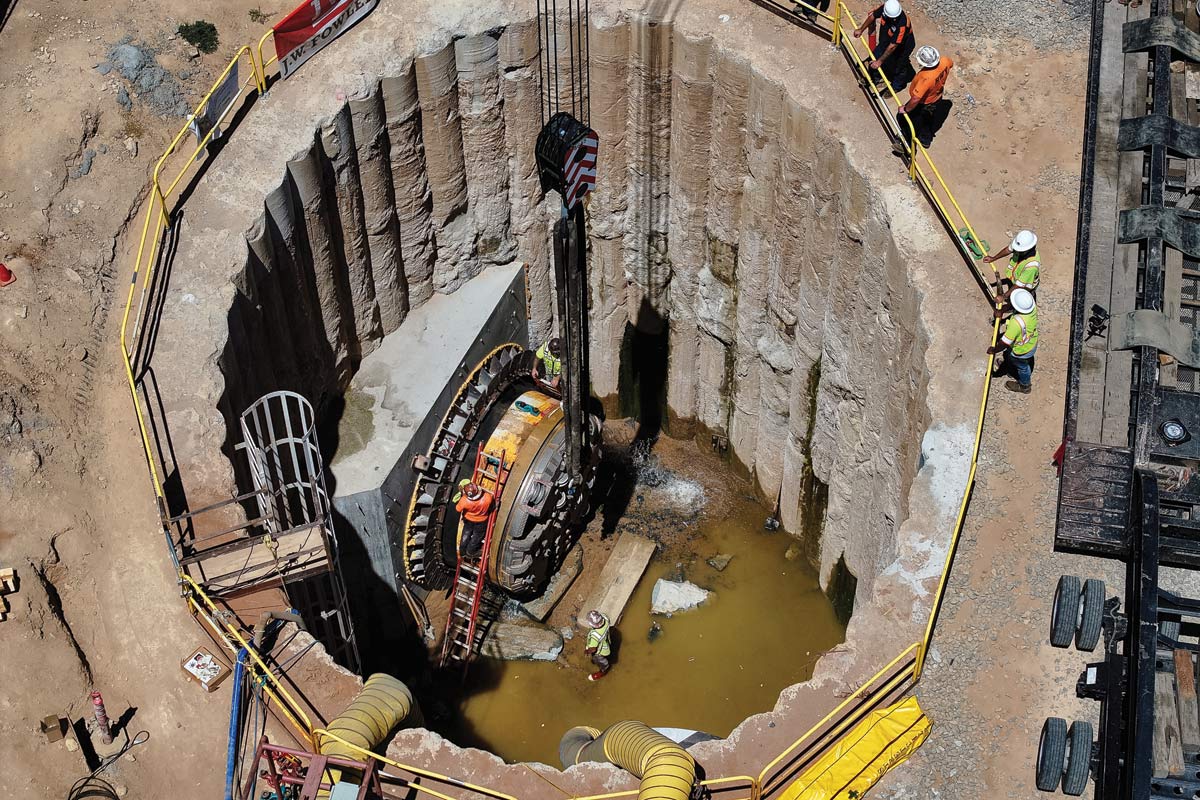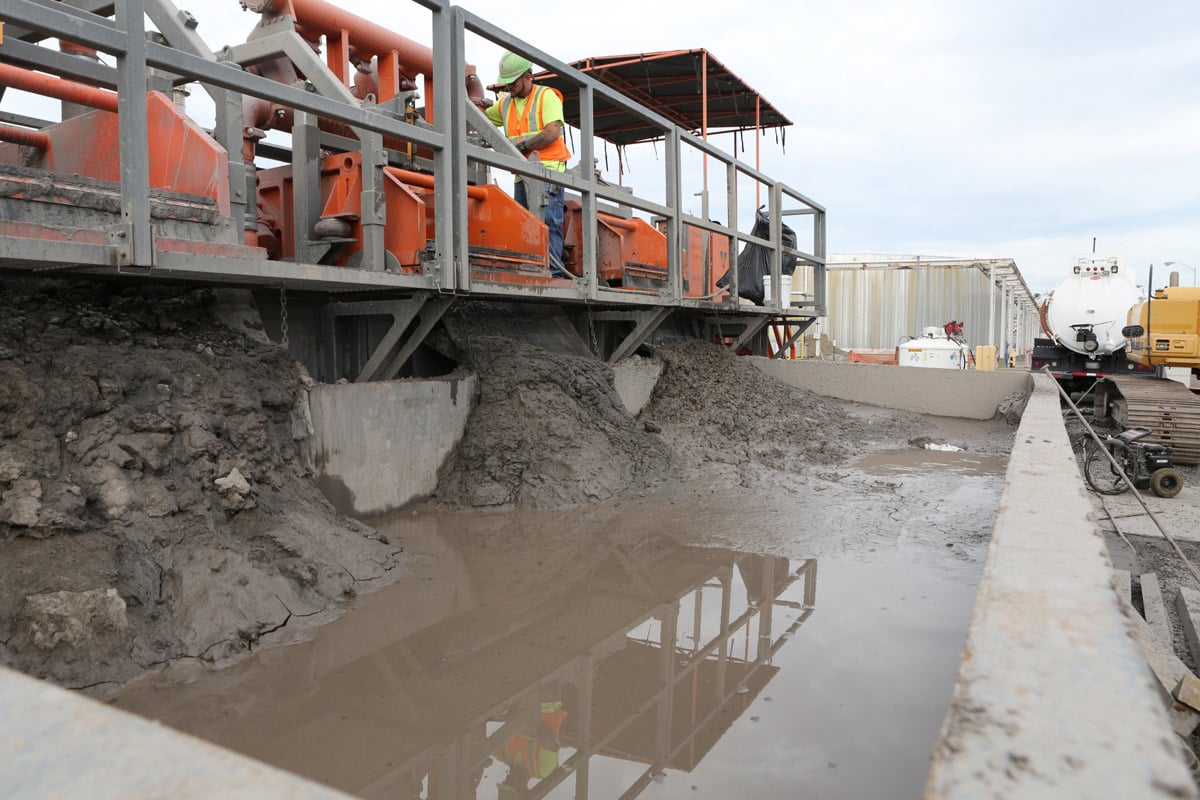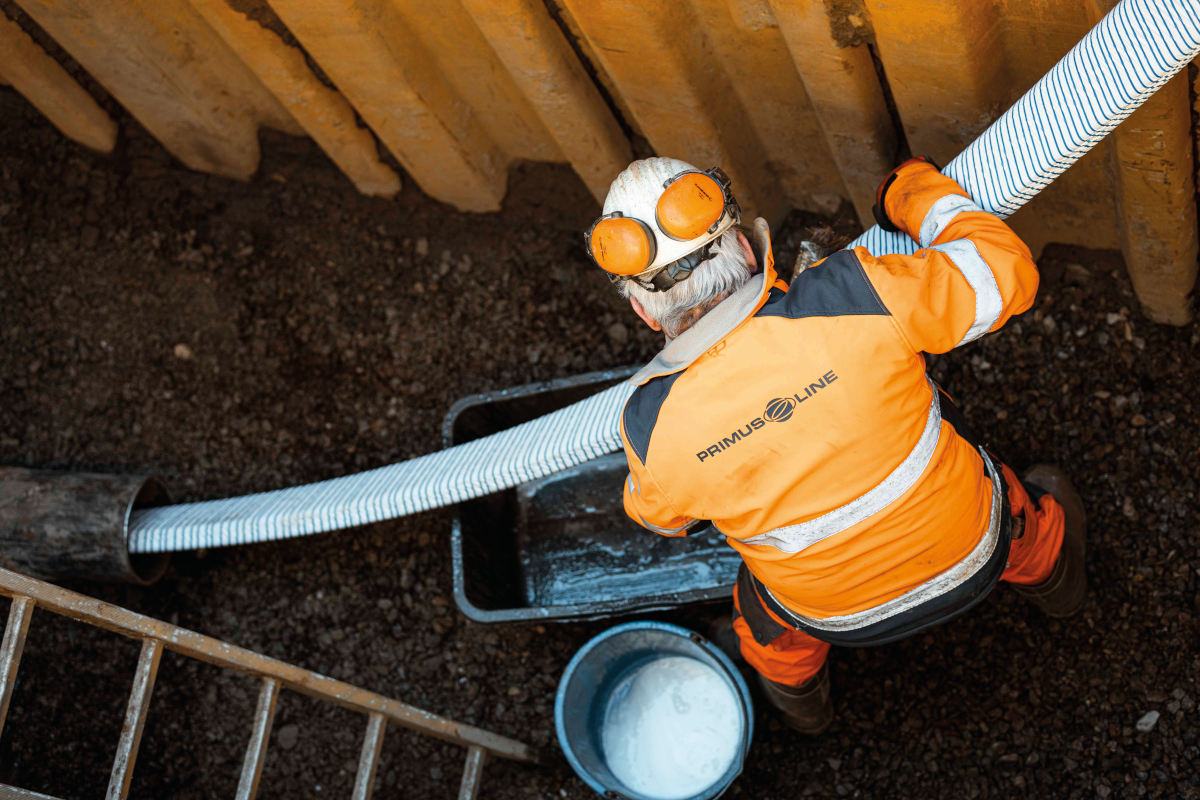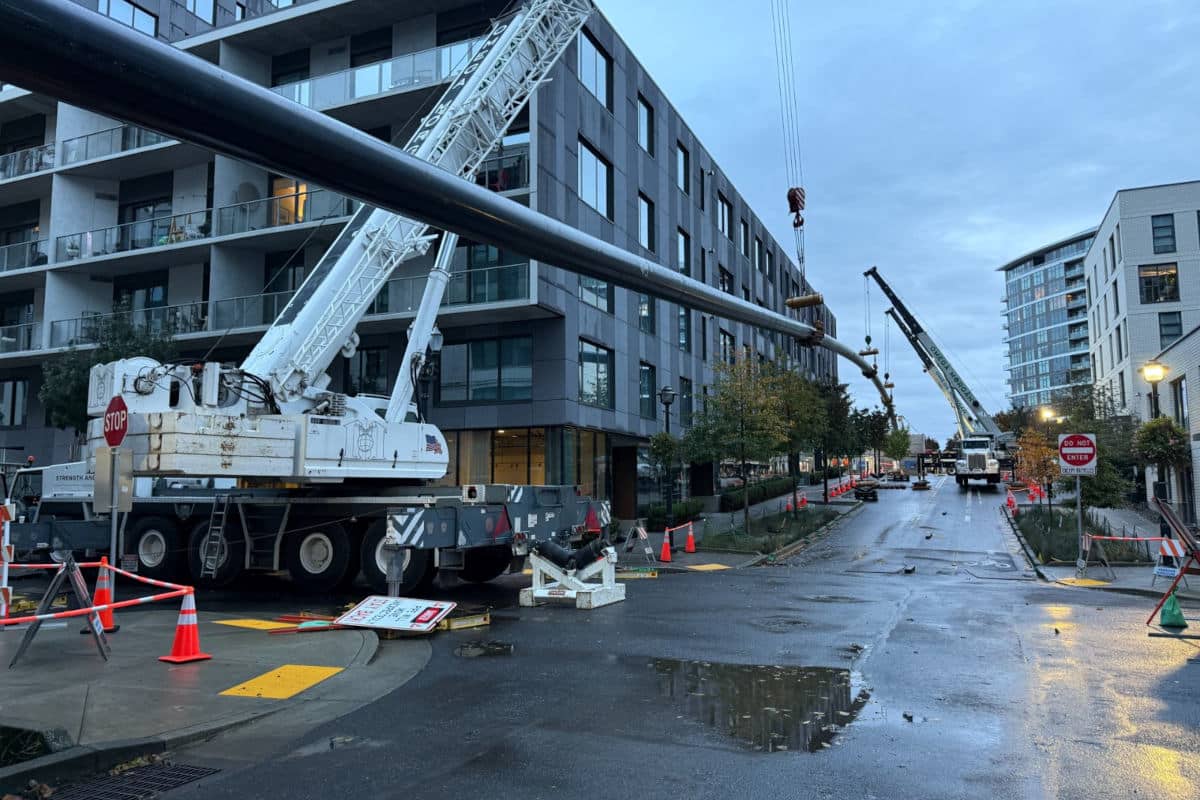
Linking the Perris Valley Pipeline with Microtunneling
The Perris Valley Pipeline Interstate 215 Crossing project connects two segments of an existing 6.5-mile, 96-in. diameter water transmission pipeline in Riverside, California. The project involves a 120-in. microtunnel installed in three drives, totaling 3,000 lf.
JW Fowler served as the contractor for this critical project, with Northwest Pipe Company (NWP) supplying the steel casing and carrier pipe. Completed in spring 2025, the crossing improves water delivery to communities served by the Metropolitan Water District of Southern California (MWD).
Overcoming Hydrogeological Challenges
The northern and southern segments were completed in 2010, but the I-215 crossing was delayed due to extreme groundwater intrusion encountered during construction. These challenging conditions rendered the original design — two drives along a shorter, more direct alignment — infeasible. Parsons Engineering and MWD developed a revised design using three drives to route around the high groundwater zone while navigating existing infrastructure.
Microtunneling was selected for its ability to control tunnel face stability and minimize settlement — critical to protecting the structural integrity of the busy interstate and Metrolink railway above. The technique also provided the precision necessary for the long drives, which ranged from 620 to 1,334 lf.
Casing Pipe Selection

JW Fowler selected steel casing over RCP as the most commercially viable option. The thinner wall thickness of steel allowed for a reduced outer diameter, making it possible to tunnel with existing MTBM equipment. Steel also enabled longer pipe lengths, reducing changeovers and downtime.
Following a competitive bid process, Permalok steel casing pipe with T-5 joints was selected. The patented mechanical press-fit joint quickly and securely interlocks to form a leak- and water-resistant connection without field welding. The T-5 joint’s stepped profile is flush with the interior and exterior pipe surfaces and precision-machined to tolerances within ±0.005 in.. The 120-in. pipe was manufactured in 20-ft lengths at NWP’s St. Louis facility.
Having used Permalok on previous projects, the contractor was familiar with its performance benefits and simple installation process. JW Fowler project manager Eric Schwem, P.E., explains, “Permalok’s mechanical connection is a huge advantage for a project of this scale. Compared to butt-welded options, it’s a night and day difference that more than doubles production.”
Microtunneling Process
Tunneling was performed using a laser-guided Herrenknecht AVN 2000D slurry MTBM, upsized with a skin kit to a 123.5-in. cutting diameter. A VMT Tunis Navigation MT Laser Total Station was placed at the midpoint of the longest drive to minimize diffraction and maintain accuracy.
Crews achieved up to three pipe changes and 60 ft of casing installed per day. Joint connections were made in 20 to 30 minutes each, a pace Schwem attributes to the uniform quality of the pipe. “Permalok is a true round pipe that marries together nicely. With proper alignment, our crews were able to easily interlock joints without relying on additional jacking forces,” he said.
The NWP team worked closely with JW Fowler to maintain production and delivery schedules, collaborating on tailored solutions to streamline installation. One example is a customized Akkerman intermediate jacking station (IJS) used on the longest drive, which was modified to incorporate T-5 joints, eliminating welded connections and saving roughly two days of production time.
“This was a prime example of collaboration in action,” notes Permalok vice president and general manager Henry Goff.. “Partnering with JW Fowler from the start allowed us to deliver the high-performance pipe the project required, adapt quickly to challenges, and develop custom solutions to keep things on track. Permalok is built for jobs like these, and it’s our customers’ success that drives us to keep pushing innovation forward.”
The final drive, a 620-ft crossing under I-215 and the Metrolink railway, required special precautions to mitigate settlement that could compromise infrastructure or public safety. A system of 30 track monitoring points was used, including optical sensors on the train tracks with total stations at the entry and exit shafts and midpoint of the alignment. Careful planning and execution resulted in negligible settlement.
Carrier Pipe Installation
To tie into the existing 96-in. pipeline, a top-down sequential excavation method was used to construct shafts adjacent to the microtunneling shafts. This approach was selected over a horizontal method due to geotechnical conditions that would have required an unviable ground improvement program.
Manufactured at NWP’s Adelanto facility about 50 miles from the jobsite, the 96-in. spiralweld steel water transmission pipe features cement mortar lining with a bare exterior and bell and spigot lap-welded joints per AWWA C200 and M11 standards.
JW Fowler used a cradle system pushed by a diesel skid steer to install the carrier pipe inside the casing tunnel. Airbags on the cradle allowed for line and grade adjustments. The pipe was secured with wood blocking and tack welded before the cradle was reversed. This efficient technique enabled crews to place up to 12 pipe segments per day. Once 150 lf of pipe was placed, welders performed full circumferential welds. The annular space was filled with cellular concrete.
Tying Together the Perris Valley Pipeline
NWP worked with JW Fowler to design custom elbows for angle changes at each shaft. The fabricated fittings feature a bell and spigot on one end and butt strap on the other, connected to the tunneled pipe using a cut-to-fit technique. This alternating joint design provided the flexibility needed to align the large-diameter pipes within tight confines. Strategic planning paid off with smooth fit-ups at each junction.
The crossing’s location—adjacent to the March Field Air Museum, cemetery, and a distribution warehouse — required close coordination with local stakeholders and MWD. Despite these challenges, the project was completed on time with minimal surface disruption.
Completion of this final section of the Perris Valley Pipeline ensures enhanced water delivery for residents and businesses throughout Riverside County. Northwest Pipe Company provided seamless support to key stakeholders, including JW Fowler, Parsons, and MWD, along with the engineered pipe solutions critical to the project’s success. The innovative weld-free Permalok technology accelerated casing pipe installation and reduced construction risks, while the engineered steel carrier pipe and custom fittings ensure long-term reliability for the region’s water infrastructure.
Mark Turina is marketing and communications manager at Northwest Pipe Co.




